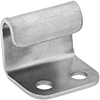Filter by
Mount Type
Mounting Location
Weight Capacity
Screw Size
Finish
Projection
Hook Opening Width
Attachment Type
Thread Length
Export Control Classification Number (ECCN)
DFARS Specialty Metals
Wire Diameter
Containers, Storage, and Furniture
Material Handling
Fastening and Joining




































